- Region
- Águilas
- Alhama de Murcia
- Jumilla
- Lorca
- Los Alcázares
- Mazarrón
- San Javier
-
ALL AREAS & TOWNS
- AREAS
- SOUTH WEST
- MAR MENOR
- MURCIA CITY & CENTRAL
- NORTH & NORTH WEST
- TOWNS
- Abanilla
- Abarán
- Aguilas
- Alamillo
- Alcantarilla
- Aledo
- Alhama de Murcia
- Archena
- Balsicas
- Blanca
- Bolnuevo
- Bullas
- Cañadas del Romero
- Cabo de Palos
- Calasparra
- Camping Bolnuevo
- Campo De Ricote
- Camposol
- Canada De La Lena
- Caravaca de la Cruz
- Cartagena
- Cehegin
- Ceuti
- Cieza
- Condado de Alhama
- Corvera
- Costa Cálida
- Cuevas De Almanzora
- Cuevas de Reyllo
- El Carmoli
- El Mojon
- El Molino (Puerto Lumbreras)
- El Pareton / Cantareros
- El Raso
- El Valle Golf Resort
- Fortuna
- Fuente Alamo
- Hacienda del Alamo Golf Resort
- Hacienda Riquelme Golf Resort
- Isla Plana
- Islas Menores & Mar de Cristal
- Jumilla
- La Azohia
- La Charca
- La Manga Club
- La Manga del Mar Menor
- La Pinilla
- La Puebla
- La Torre
- La Torre Golf Resort
- La Unión
- Las Palas
- Las Ramblas
- Las Ramblas Golf
- Las Torres de Cotillas
- Leiva
- Librilla
- Lo Pagan
- Lo Santiago
- Lorca
- Lorquí
- Los Alcázares
- Los Balcones
- Los Belones
- Los Canovas
- Los Nietos
- Los Perez (Tallante)
- Los Urrutias
- Los Ventorrillos
- Mar De Cristal
- Mar Menor
- Mar Menor Golf Resort
- Mazarrón
- Mazarrón Country Club
- Molina de Segura
- Moratalla
- Mula
- Murcia City
- Murcia Property
- Pareton
- Peraleja Golf Resort
- Perin
- Pilar de la Horadada
- Pinar de Campoverde
- Pinoso
- Playa Honda
- Playa Honda / Playa Paraíso
- Pliego
- Portmán
- Pozo Estrecho
- Puerto de Mazarrón
- Puerto Lumbreras
- Puntas De Calnegre
- Region of Murcia
- Ricote
- Roda Golf Resort
- Roldan
- Roldan and Lo Ferro
- San Javier
- San Pedro del Pinatar
- Santiago de la Ribera
- Sierra Espuña
- Sucina
- Tallante
- Terrazas de la Torre Golf Resort
- Torre Pacheco
- Totana
- What's On Weekly Bulletin
- Yecla


- EDITIONS:
 Spanish News Today
Spanish News Today
 Alicante Today
Alicante Today
 Andalucia Today
Andalucia Today
The ecological disaster of Portmán bay
Millions of tons of mining waste were dumped in the bay by Peñarroya
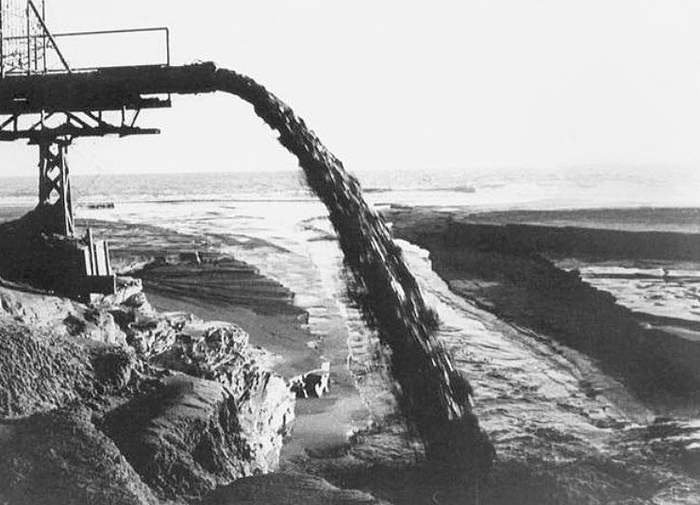
Although there were undoubtedly prehistoric inhabitants of this area of Murcia, the real history of Portmán dates back 2,000 years to the Roman occupation.
Thousands of slaves worked in the Roman mineral mines throughout the Sierra Minera, extracting and processing a number of minerals and ores for exportation across the growing Roman Empire. Portmán was a natural sheltered harbor and was a major shipping port throughout the period of Roman occupation.
However, what was such a useful tool for the Romans no longer exists, as it has been the victim of what is widely regarded as one of the greatest ecological crimes committed in Spain in the twentieth century.
Nowadays the bay has been almost entirely filled in with “by-products” (or waste) in the form of steriles from the open-cast mining operations which were carried out in the Sierra Minera between 1957 and 1987, following the opening of the Lavadero Roberto mineral treatment and washing site which still stands as a 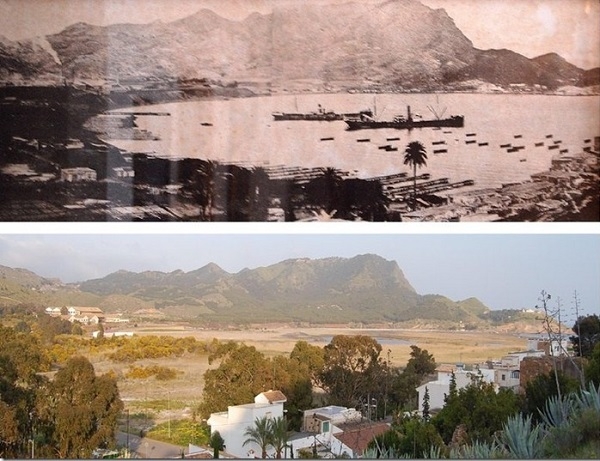 monument to the disaster in the outskirts of the village of Portmán.
monument to the disaster in the outskirts of the village of Portmán.
At first the amount of steriles dumped in the bay was reported to be approximately 3,000 tons per year. But by 1968 operations had escalated, and in the end estimates vary from 70 million to 315 million tons of waste effectively accumulating to form a huge and unwanted toxic landfill. Substances such as carbonates and sulphides of lead, zinc, iron, copper, nickel, arsenic, iron oxides, aluminum, zinc and calcium), and compounds used in the treatment of flotation (sodium cyanide, sulfuric acid, xanthates, copper sulphate, etc) were piled unashamedly into the bay, leaving vast areas of the seafloor covered up to a depth of 150 metres in places.
Originally, the waste was piled up in huge deposits at the foot of the quarries from which it was taken, but the 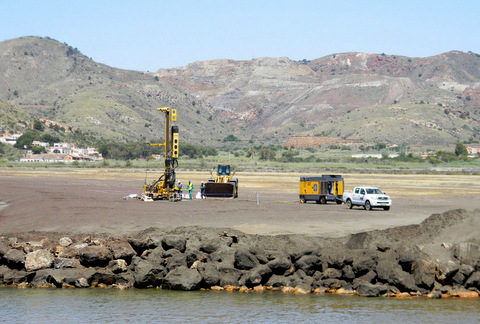 problem was exacerbated by the flotation washing at the Lavadero Roberto. It was not economically viable to store the residues in pools or bury them, so the mining company Peñarroya sought permission to dump them in the Mediterranean. This permission was twice denied by the government in 1954 and 1957 due to the toxic nature of the substances involved and the effect they would have on fishing, but in January 1958 the government made an abrupt U-turn and allowed dumping to take place for a period of five years as long as it was done at least 400 metres from the coast.
problem was exacerbated by the flotation washing at the Lavadero Roberto. It was not economically viable to store the residues in pools or bury them, so the mining company Peñarroya sought permission to dump them in the Mediterranean. This permission was twice denied by the government in 1954 and 1957 due to the toxic nature of the substances involved and the effect they would have on fishing, but in January 1958 the government made an abrupt U-turn and allowed dumping to take place for a period of five years as long as it was done at least 400 metres from the coast.
At the same time compensation was to be paid to fishermen, and a further condition was that dumping would cease if it was proven to be detrimental to the environment.
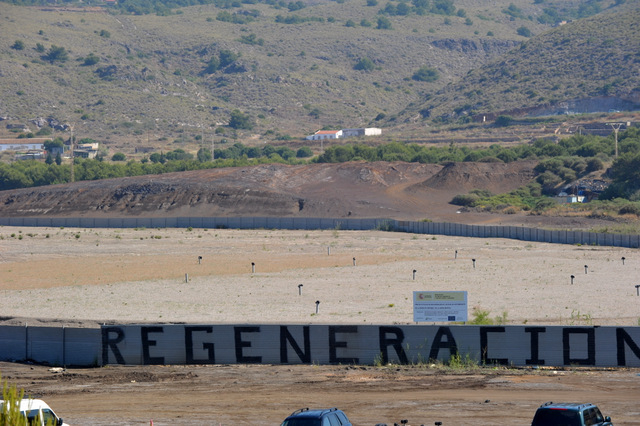 These conditions, unfortunately, were never enforced.
These conditions, unfortunately, were never enforced.
By 1961 the minimum distance from the shore was reduced to 250 metres, and by 1965 the effects were becoming visible to the naked eye. However, the authorities continued to take little notice, and attempts to force Peñarroya to dredge the bay and return it to its natural condition were half-hearted at best.
And the dumping continued.
As production from the mines increased, the company appears to have adopted the strategy of denying the importance of Portmán as a port, and some believe that a deal was done in 1967 with the Town Hall of Cartagena and the regional port authority to allow dumping to continue in return for Peñarroya providing the land and funding for a new port in Cabo de Palos.
The residents of Portmán and the Town Hall of La Unión protested, but to no avail, and by 1969 all restrictions on the dumping of steriles in the bay of Portmán were lifted by the national government. In the eyes of many 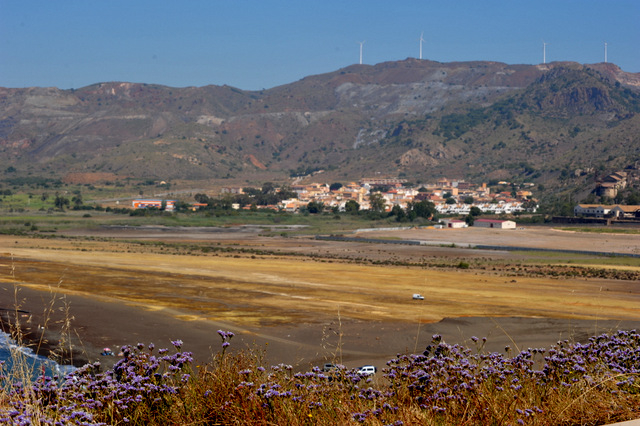 this makes the Ministry of Public Works an accessory to the crime.
this makes the Ministry of Public Works an accessory to the crime.
Still the Town Hall of La Unión attempted to halt the contamination of the bay, but a Supreme Court decision in December 1971 ruled in favour of Peñarroya, and from that point on dumping was continuous and unlimited.
Even the advent of democracy in Spain failed to have any effect on the systematic destruction of the bay, and astonishingly in 1978 permission was granted for the volume of deposits being made to be increased. Astonishingly because by then the toxicity of the waste was known, as a high concentration of heavy metals such as cadmium and lead was allied to the toxic substances used in the Lavadero, such as copper sulphate, sulphuric acid and sodium cyanide.
Equally astonishing is the fact that many sources refer to the situation in Portmán as a “natural disaster”. 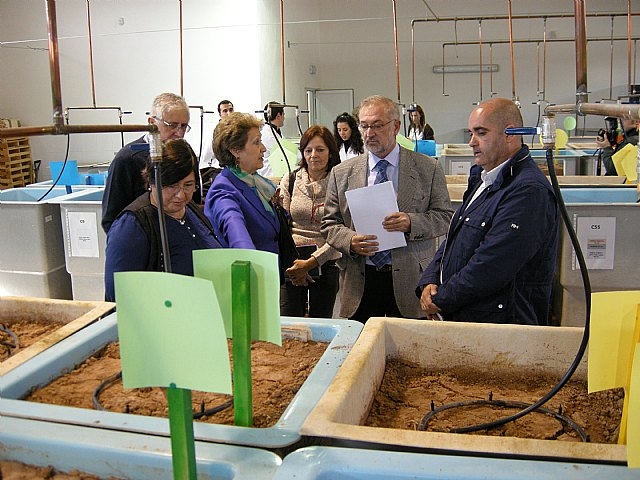 Seldom can a disaster have been so obviously the work of man, especially given that those who polluted the area did so in full knowledge of the effects their profiteering would have.
Seldom can a disaster have been so obviously the work of man, especially given that those who polluted the area did so in full knowledge of the effects their profiteering would have.
In 1980 Greenpeace joined the protests, but by then, in reality, it was too late. The bay of Portmán had been lost, and as the productivity of the mines dwindled Peñarroya was already looking for a way out. This they found in 1988, when all the assets of the company were transferred to Portmán Golf.
Portmán Golf is a company which was derived from Peñarroya, but by means of the transfer the mining company effectively absolved itself of any responsibility for the area it had systematically ruined. In addition, the economy of Portmán stagnated, and people left the town in search of jobs elsewhere.
Portmán Golf now dedicates itself to bringing pressure on the authorities for proposed environmental 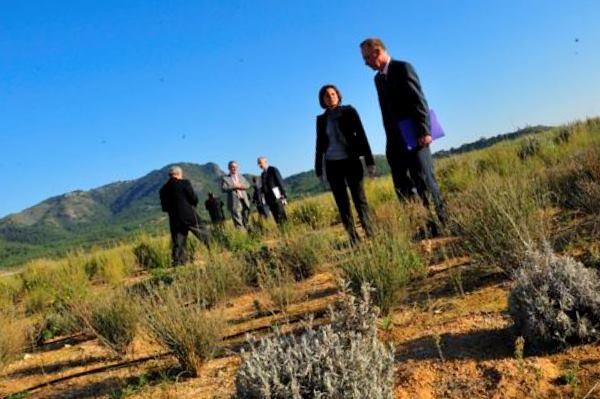 regeneration projects to go hand in hand with the tourist development of the bay, and to include a golf course, hotels and a sporting marina as well as thousands of residential properties in what ought by rights to be one of the most attractive parts of the Costa Cálida. Of course, if they have their way, land owned by the company would be re-classified as buildable. Some view this as a travesty and believe the company should not profit from a situation caused by its own protagonists, although others view the regeneration as the ultimate goal to creating sustainable employment for the municipality and are willing to accept whatever it takes to achieve that goal, even if it means the company profiting from the regeneration of the bay.
regeneration projects to go hand in hand with the tourist development of the bay, and to include a golf course, hotels and a sporting marina as well as thousands of residential properties in what ought by rights to be one of the most attractive parts of the Costa Cálida. Of course, if they have their way, land owned by the company would be re-classified as buildable. Some view this as a travesty and believe the company should not profit from a situation caused by its own protagonists, although others view the regeneration as the ultimate goal to creating sustainable employment for the municipality and are willing to accept whatever it takes to achieve that goal, even if it means the company profiting from the regeneration of the bay.
Over the years dozens of promises have been made to achieve the regeneration of the bay, but for the moment, none of the proposed regeneration projects has gone ahead, due mainly to the high cost of undertaking the works and the unwillingness of central government to commit funds to the regeneration project. The fact that approving large-scale projects also requires a long-term approach is also not helped by the constant changes in local, regional and national governments: many believed the regeneration would go ahead in 2011 after the PSOE government approved 70 million euros of financing for the project, however the incoming PP were swift to point out that the promises were unachievable as government coffers were empty.
During the 7 year premiership of Francisco Bernabé, who was Mayor of La Unión from 2007 until 2014, a 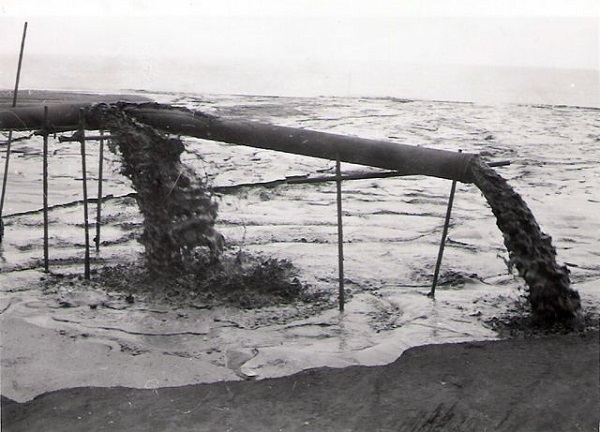 number of initiatives were presented including the final plan to collapse just before he took up the post of regional minister for Public Works and Development in the regional government which involved working with a German company which had offered to undertake the work free of charge in exchange for rights to exploit the minerals extracted from the waste material.
number of initiatives were presented including the final plan to collapse just before he took up the post of regional minister for Public Works and Development in the regional government which involved working with a German company which had offered to undertake the work free of charge in exchange for rights to exploit the minerals extracted from the waste material.
As of December 2014, work continues to find a route to achieve the regeneration with promises already being made ahead of the 2015 regional elections.
Cartagena
El Carmoli
Islas Menores and Mar de Cristal
La Manga Club
La Manga del Mar Menor
La Puebla
La Torre Golf Resort
La Union
Los Alcazares
Los Belones
Los Nietos
Los Urrutias
Mar Menor Golf Resort
Pilar de la Horadada
Playa Honda / Playa Paraiso
Portman
Roldan and Lo Ferro
San Javier
San Pedro del Pinatar
Santa Rosalia Lake and Life resort
Terrazas de la Torre Golf Resort
Torre Pacheco
Aledo
Alhama de Murcia
Bolnuevo
Camposol
Condado de Alhama
Fuente Alamo
Hacienda del Alamo Golf Resort
Lorca
Mazarron
Puerto de Mazarron
Puerto Lumbreras
Sierra Espuna
Totana
Abaran
Alcantarilla
Archena
Blanca
Corvera
El Valle Golf Resort
Hacienda Riquelme Golf Resort
Lorqui
Molina de Segura
Mosa Trajectum
Murcia City
Peraleja Golf Resort
Ricote
Sucina
Condado de Alhama
El Valle Golf Resort
Hacienda del Alamo Golf Resort
Hacienda Riquelme Golf Resort
Islas Menores and Mar de Cristal
La Manga Club
La Torre Golf Resort
Mar Menor Golf Resort
Mazarron Country Club
Mosa Trajectum
Peraleja Golf Resort
Santa Rosalia Lake and Life resort
Terrazas de la Torre Golf Resort
La Zenia
Lomas de Cabo Roig
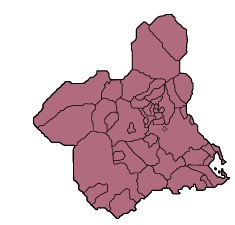
CAMPOSOL TODAY Whats OnCartagena SpainCoronavirusCorvera Airport MurciaMurcia Gota Fria 2019Murcia property news generic threadWeekly Bulletin
